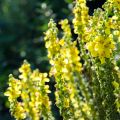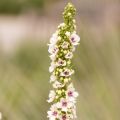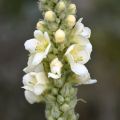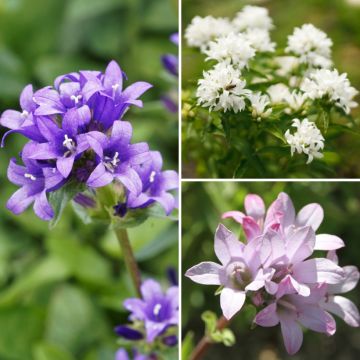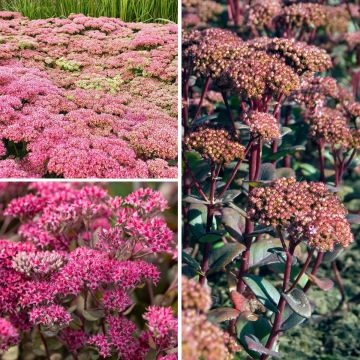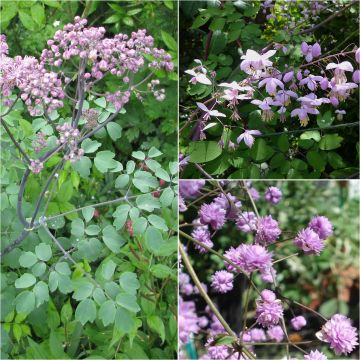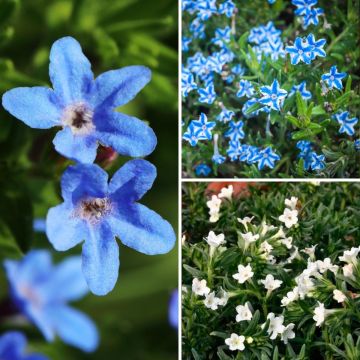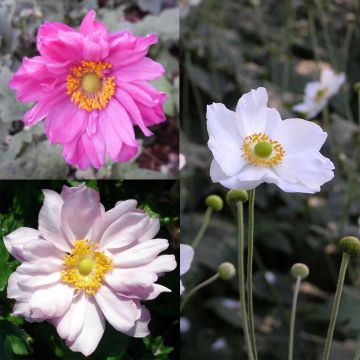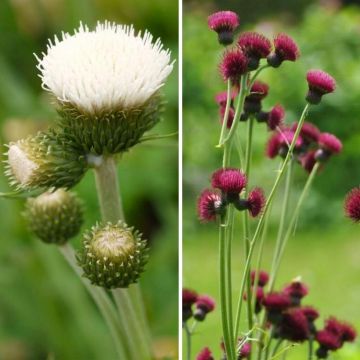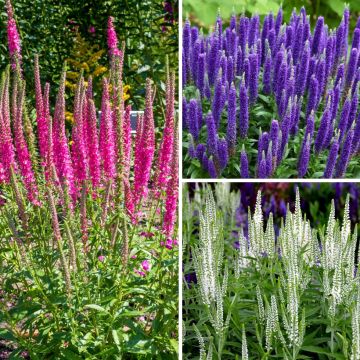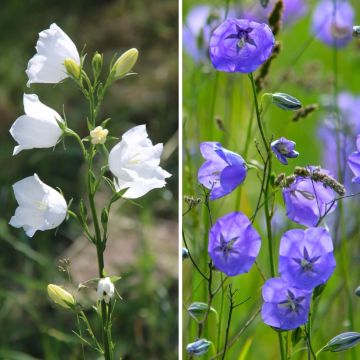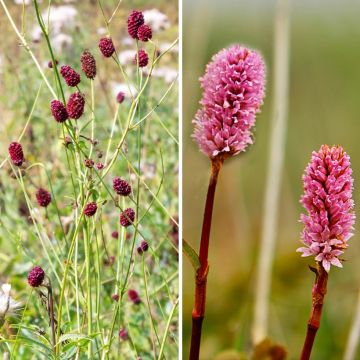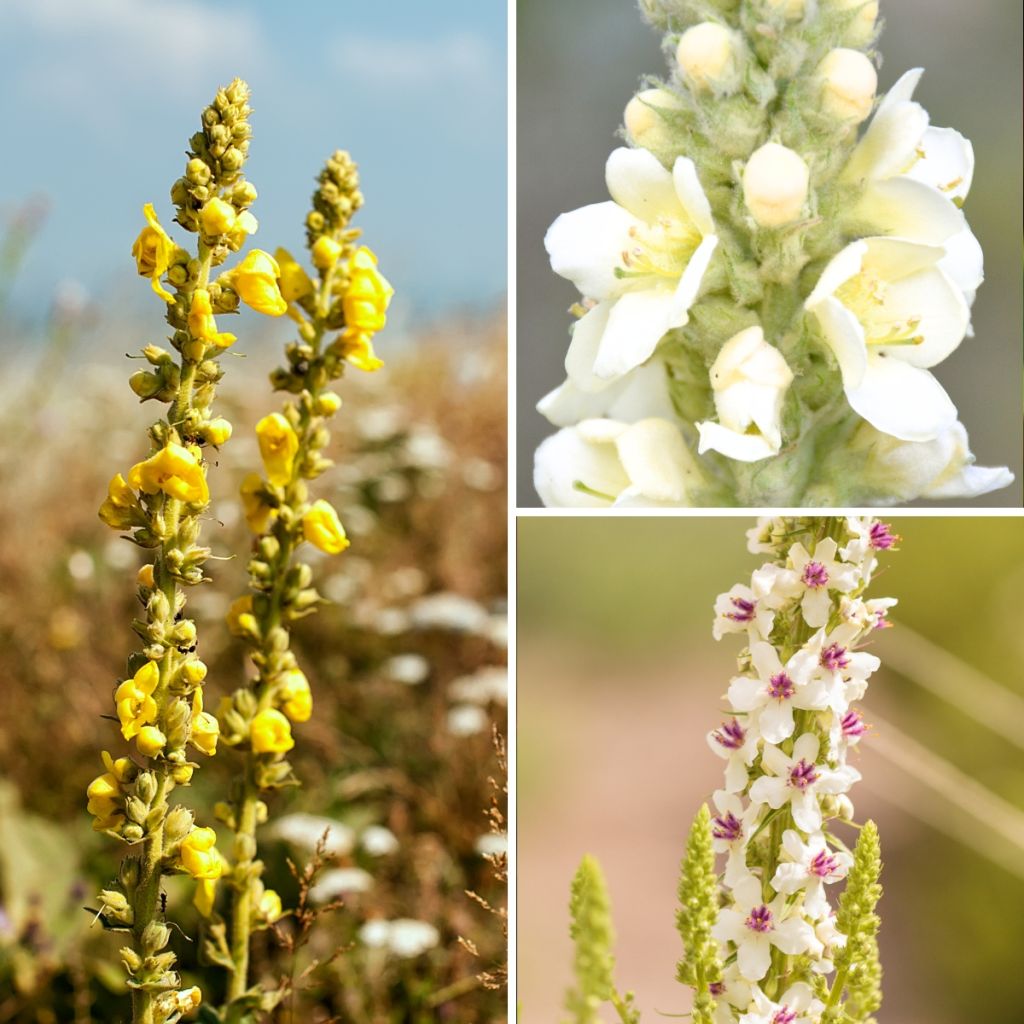

Wild Verbascum Collection - Mulleins
Wild Verbascum Collection - Mulleins
Verbascum
Mullein
This item cannot be shipped to the selected country
Delivery charge from €5.90
Delivery to Corse prohibited
More information
Schedule delivery date,
and select date in basket
This plant carries a 12 months recovery warranty
More information
We guarantee the quality of our plants for a full growing cycle, and will replace at our expense any plant that fails to recover under normal climatic and planting conditions.
From €5.90 for pickup delivery and €6.90 for home delivery
Express home delivery from €8.90.
Delivery to Corse prohibited: UE law prohibits the import of this plant from mainland France to Corse as part of the fight against Xylella fastidiosa. Please accept our sincere apologies.
More information
Does this plant fit my garden?
Set up your Plantfit profile →
Collection items (3 plants)
Description
This collection of Verbascums or wild mulleins brings Verbascum olympicum, V. chaixii 'Album', and V. phlomoides 'Spica'. These short-lived perennial plants are attractive for their magnificent spikes of flowers in yellow or white tones, as well as for their low requirements and ease of maintenance. In sunny exposure, they thrive in well-drained, dry, and poor soil. Verbascum olympicum can flower at human height, while the other two varieties are slightly smaller. Their foliage is semi-evergreen in winter; they tolerate water scarcity and temperatures down to -15°C.
The collection consists of:
1 x Verbascum olympicum: this variety, called the Olympus Mullein, is the tallest in the collection, reaching up to 2 metres in height when in flower. Its spikes of yellow flowers are a true spectacle between July and September. Its foliage is fuzzy and grey.
1 x Verbascum chaixii 'Album': Reaching a height of about 1 metre, this plant, also known as Chaix's Mullein, is remarkable for its tiny white flowers with a small purple eye tightly packed on its stems. Its foliage is green.
1 x Verbascum phlomoides 'Spica': White Mullein or Spica Mullein; this plant stands out for its large white flowers. Its size is similar to that of Verbascum chaixii, about 1 m. Often grown as a biennial, it readily self-seeds in slightly neglected areas.
Due to its tall stature, Verbascum olympicum should be placed in the background for a harmonious ensemble. The other two varieties should be placed in the middle or front of your flower bed. Each of these mulleins requires a spacing of at least 40 to 50 cm to grow comfortably—plant 3 to 4 plants per square metre. Highly ornamental, their flowering also attracts pollinators.
For a coherent and balanced ensemble, associate these Verbascums with plants with similar needs: sun and well-drained soil, even rocky and dry in summer. Lavender 'Munstead' will be attractive for its fragrance and drought resistance. Sedum 'Autumn Joy' will bring a touch of colour in autumn, while Salvia 'Caradonna' will add a beautiful purple touch to the ensemble.
Report an error about the product description
Flowering
Foliage
Plant habit
Botanical data
Verbascum
Scrophulariaceae
Mullein
Cultivar or hybrid
Other Perennial collections
Planting and care
The mullein should be planted in full sun, at most in partial shade in warmer climates. It should preferably be planted in spring, in ordinary soil, but light and porous, imperatively well-drained. It prefers limestone soil, cool to dry in summer, where it will readily self-seed. More or less biennial in humid and cold regions in winter, it seems more perennial in a Mediterranean climate. Cut the faded flower heads at the base of the stem to promote the re-emergence of flowers and the perenniality of the plant. You can let some seeds mature so the plant can freely self-seed in the garden. Prune the dry parts as soon as they are no longer decorative, and clean the clump as quickly as possible in late winter.
Planting period
Intended location
Care
This item has not been reviewed yet - be the first to leave a review about it.
Haven't found what you were looking for?
Hardiness is the lowest winter temperature a plant can endure without suffering serious damage or even dying. However, hardiness is affected by location (a sheltered area, such as a patio), protection (winter cover) and soil type (hardiness is improved by well-drained soil).

Photo Sharing Terms & Conditions
In order to encourage gardeners to interact and share their experiences, Promesse de fleurs offers various media enabling content to be uploaded onto its Site - in particular via the ‘Photo sharing’ module.
The User agrees to refrain from:
- Posting any content that is illegal, prejudicial, insulting, racist, inciteful to hatred, revisionist, contrary to public decency, that infringes on privacy or on the privacy rights of third parties, in particular the publicity rights of persons and goods, intellectual property rights, or the right to privacy.
- Submitting content on behalf of a third party;
- Impersonate the identity of a third party and/or publish any personal information about a third party;
In general, the User undertakes to refrain from any unethical behaviour.
All Content (in particular text, comments, files, images, photos, videos, creative works, etc.), which may be subject to property or intellectual property rights, image or other private rights, shall remain the property of the User, subject to the limited rights granted by the terms of the licence granted by Promesse de fleurs as stated below. Users are at liberty to publish or not to publish such Content on the Site, notably via the ‘Photo Sharing’ facility, and accept that this Content shall be made public and freely accessible, notably on the Internet.
Users further acknowledge, undertake to have ,and guarantee that they hold all necessary rights and permissions to publish such material on the Site, in particular with regard to the legislation in force pertaining to any privacy, property, intellectual property, image, or contractual rights, or rights of any other nature. By publishing such Content on the Site, Users acknowledge accepting full liability as publishers of the Content within the meaning of the law, and grant Promesse de fleurs, free of charge, an inclusive, worldwide licence for the said Content for the entire duration of its publication, including all reproduction, representation, up/downloading, displaying, performing, transmission, and storage rights.
Users also grant permission for their name to be linked to the Content and accept that this link may not always be made available.
By engaging in posting material, Users consent to their Content becoming automatically accessible on the Internet, in particular on other sites and/or blogs and/or web pages of the Promesse de fleurs site, including in particular social pages and the Promesse de fleurs catalogue.
Users may secure the removal of entrusted content free of charge by issuing a simple request via our contact form.
The flowering period indicated on our website applies to countries and regions located in USDA zone 8 (France, the United Kingdom, Ireland, the Netherlands, etc.)
It will vary according to where you live:
- In zones 9 to 10 (Italy, Spain, Greece, etc.), flowering will occur about 2 to 4 weeks earlier.
- In zones 6 to 7 (Germany, Poland, Slovenia, and lower mountainous regions), flowering will be delayed by 2 to 3 weeks.
- In zone 5 (Central Europe, Scandinavia), blooming will be delayed by 3 to 5 weeks.
In temperate climates, pruning of spring-flowering shrubs (forsythia, spireas, etc.) should be done just after flowering.
Pruning of summer-flowering shrubs (Indian Lilac, Perovskia, etc.) can be done in winter or spring.
In cold regions as well as with frost-sensitive plants, avoid pruning too early when severe frosts may still occur.
The planting period indicated on our website applies to countries and regions located in USDA zone 8 (France, United Kingdom, Ireland, Netherlands).
It will vary according to where you live:
- In Mediterranean zones (Marseille, Madrid, Milan, etc.), autumn and winter are the best planting periods.
- In continental zones (Strasbourg, Munich, Vienna, etc.), delay planting by 2 to 3 weeks in spring and bring it forward by 2 to 4 weeks in autumn.
- In mountainous regions (the Alps, Pyrenees, Carpathians, etc.), it is best to plant in late spring (May-June) or late summer (August-September).
The harvesting period indicated on our website applies to countries and regions in USDA zone 8 (France, England, Ireland, the Netherlands).
In colder areas (Scandinavia, Poland, Austria...) fruit and vegetable harvests are likely to be delayed by 3-4 weeks.
In warmer areas (Italy, Spain, Greece, etc.), harvesting will probably take place earlier, depending on weather conditions.
The sowing periods indicated on our website apply to countries and regions within USDA Zone 8 (France, UK, Ireland, Netherlands).
In colder areas (Scandinavia, Poland, Austria...), delay any outdoor sowing by 3-4 weeks, or sow under glass.
In warmer climes (Italy, Spain, Greece, etc.), bring outdoor sowing forward by a few weeks.

































